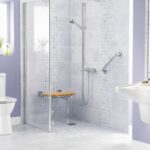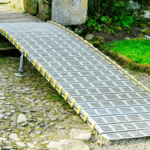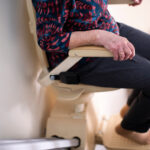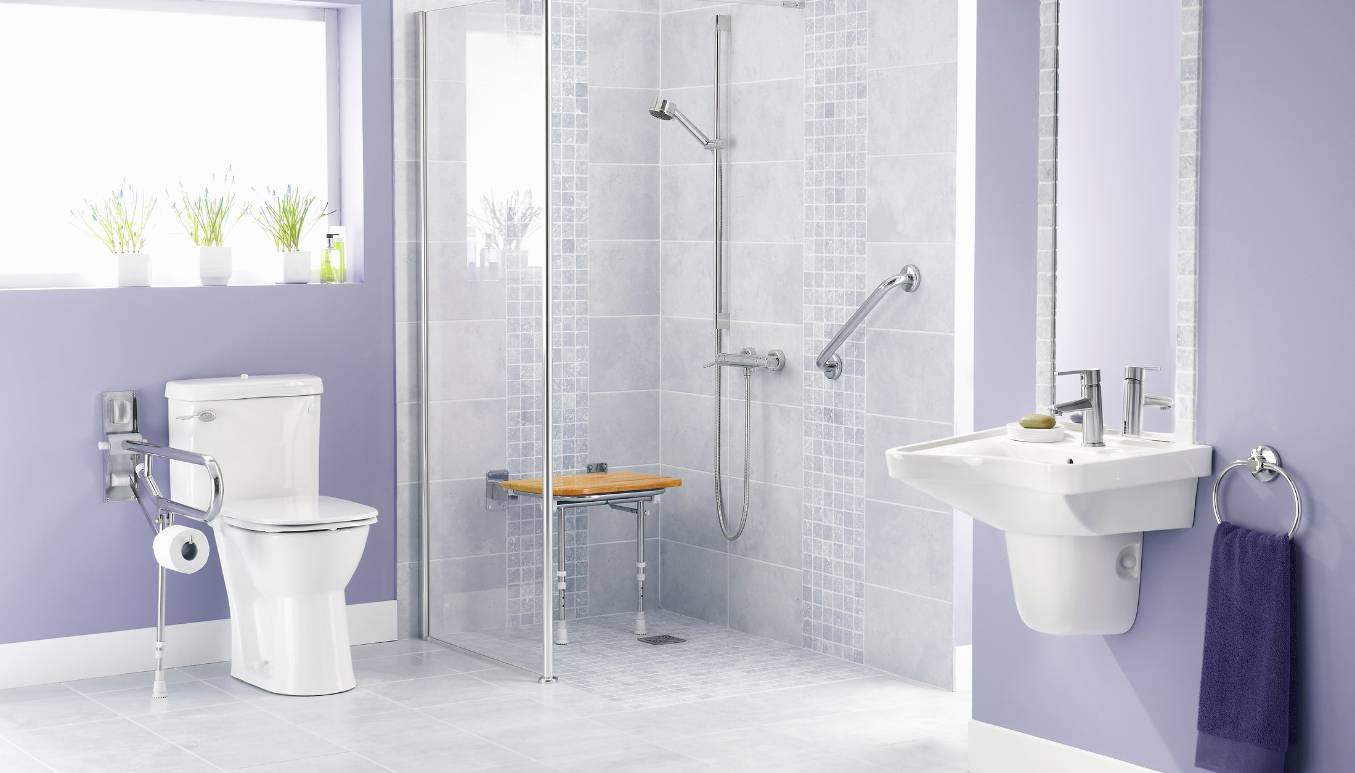From treading on slippery floors to sitting and standing, the bathroom is full of potential hazards for seniors or anyone with limited mobility. When it comes to bathroom safety, having the right equipment can make a world of difference. But how do you know which products to choose? And which options are the best fit for your needs?
This guide can help! With it, you can make an informed decision about bathroom safety equipment. Learn about the most common types of equipment, advice on buying the right products, approaches for discussing needs with others, and more.
Table of Contents
- What Is Bathroom Safety Equipment?
- Identifying the Right Products
- Discussing Bathroom Safety Needs
- Features to Consider
- Types of Bathroom Safety Equipment
- Bathroom Safety Equipment Maintenance and Cleaning
- Other Bathroom Safety Tips
1. What Is Bathroom Safety Equipment?
Bathroom safety equipment includes various products and devices that support individuals with mobility and safety concerns. Such equipment assists people in performing bathroom activities, including showering, using the toilet, and grooming themselves.
These products are made to increase the independence and safety of people who have limited mobility, balance challenges, or disabilities that create challenges for bathroom usage. They help reduce the risk of falls and other accidents in the bathroom and promote independence.
2. Identifying the Right Products
First, take a moment to identify what products will be the most beneficial. Different equipment is designed for different needs and preferences. Even similar products can have different features.
For example, a shower chair with a backrest welcome relief for anyone that can’t stand for long periods of time. For balance issues, grab bars that are curved or mounted at different angles are extremely helpful. Determining what’s necessary ahead of time can save money and space in the long run. You can always add different products as needs arise.
Look for high-quality equipment
It’s also important to choose high-quality equipment from reputable brands to ensure that it’s sturdy and reliable. Look for products that have been tested and certified for safety. Also, check reviews from other customers to get an idea of how well they’ve worked for others.
At Mullaney’s, we carry top-of-the-line equipment and stand behind everything we sell. Some brands we offer include NOVA Medical Products, Stander, Essential Medical Supply, and EZ Access.
3. Discussing Bathroom Safety Equipment Needs
For others
When a loved one needs bathroom safety equipment, discussing the topic can be difficult for caregivers. Everyone’s feelings regarding aging or disability is different. Try to be sensitive to the person’s mindset, even if you don’t agree.
Identify needs: Start by identifying the specific needs of the individual, and be prepared to present solutions in the form of safety equipment. When introducing the topic, it is important to remain respectful and non-judgmental, particularly if resistance is encountered.
Focus on benefits: An excellent approach is to focus on the benefits that safety equipment can provide. For instance, seeking out grab bars, shower chairs, or raised commode seats may decrease the risk of falling and promote independence.
Offer assistance: Offering to assist with decisions and installation can also reduce barriers and promote cooperation. If possible, it can sometimes be helpful to involve healthcare providers or experts to provide input or resources. Again, it all comes down to the person’s demeanor and personality for the best approach.
For yourself
On the other hand, maybe you’re the one who needs bathroom safety equipment. If so, it can still be challenging to talk about the topic with others. However, discussing safety concerns with loved ones can help give you peace of mind.
Share reasons: Start by identifying why safety equipment is necessary in order to communicate clearly and effectively. Communicate any safety issues that exist and emphasize the importance that safety equipment can play in maintaining safety and independence.
Include others: It may also be helpful to invite others along to help select safety equipment to encourage cooperation and support.
Keep communication open: When beginning the conversation, remain open-minded and receptive to questions and concerns. Listen attentively, stay patient, and maintain empathy to build a strong foundation in the discussion.
How to address resistance
No one likes to feel helpless. Remember that resistance can stem from fear, embarrassment, or concerns about loss of independence.
Identify concerns: Start by asking open-ended questions to identify the reasons behind the resistance and to clarify any confusion about the equipment.
Acknowledge feelings: Acknowledge emotions and empathize with your loved one’s concerns, and explain how the equipment can improve safety and independence.
Discuss the negatives: Address any potential negative aspects of not using the equipment, such as the increased risk of falls or injury.
Offer instruction: Finally, provide proper training on using the equipment effectively and offer reassurance that the equipment can be removed easily if necessary. If possible, encourage your loved one to practice using the equipment with you present. This may help increase their confidence and ensure they are able to use the equipment without difficulty.
4. Features to Consider
Beyond basic product function, there are many features to consider with shopping for bathroom safety equipment. Take into account the following before making a final decision.
Finding the right supplier: Look for suppliers that specialize in medical equipment or mobility aids. Do they have a track record of providing high-quality and reliable products? Mullaney’s Pharmacy and Medical Supply has been helping people live their healthiest and most independent lives in the Cincinnati area for over 80 years. We provide clear information on warranties, return policies, and expected shipping and delivery times.
Price considerations: While it’s important to find equipment that’s durable and meets specific needs, make sure to take cost into account. Don’t assume less expensive equals inferior quality, and ditto for higher priced items. Do some research, talk to a medical supply professional, and read customer reviews.
Weight capacity and size: Ensure the equipment can support the individual’s specific needs. Equipment that is too small or doesn’t have the appropriate weight capacity can be dangerous, so it’s important to check the specifications before purchasing.
Material and durability: Look for equipment made from high-quality materials that can withstand daily use and the weight of the user. The durability of the equipment is essential for ensuring it remains a long-term solution.
Adjustability: Products that can be adjusted mean a better fit and an increase in the level of comfort and support. Adjustability can include height or width adjustments, backrest adjustments, or even adjustable armrests.
Installation options and directions: Some options may require professional installation, while others may come with simple directions for installation at home. It’s important to consider your own level of comfort with installation. Do you feel confident installing the equipment yourself or will you need to hire a pro? No matter what, make sure to follow all installation directions carefully to ensure the equipment is installed safely and correctly.
5. Types of Bathroom Safety Equipment
The sheer number of different types of equipment can be overwhelming. Once you take into account your needs and preferences, it’s time to explore some specific options. Here are some of the most common types of bathroom safety equipment.
Grab Bars
Grab bars are an essential piece of bathroom safety equipment for anyone who struggles with mobility or balance. These bars provide something to hold onto when getting in and out of the shower or tub, or when using the toilet.
There are different types, including pressure-mounted options for temporary installation or permanent ones mounted to the wall. Grab bars are available in various lengths and thicknesses to accommodate different needs. They even come in a range of colors and finishes to match your bathroom decor.
Shower Chairs
For those who find it difficult or unsafe to stand in the shower, a shower or bath chair can provide a comfortable and secure seating option. These chairs are water-resistant and have non-slip feet to prevent slipping and sliding. Some models have adjustable height settings to accommodate different users, and others have built-in handles or armrests for added stability. Some shower chairs even come with backrests for added support.
Toilet Safety Frames
Toilet safety frames are designed to make it easier for people with mobility challenges to use the toilet without help. These frames are placed around the toilet. They provide a stable and secure place to hold onto when sitting down or standing up. Safety frames often come with padded armrests for added comfort, and some models have adjustable height settings to accommodate different users.
Bath Lift
A bath lift is a motorized device that can be placed in the bathtub. It is used to lower the user down into the water and raise them back up again. This product can be especially helpful for individuals with mobility or balance issues who still want to enjoy a relaxing bath.
Raised Toilet Seats
These are an excellent option for people who have difficulty bending or sitting down low. Raised toilet seats provide elevation on a toilet seat by a few inches, making it easier to sit down and stand up. Some raised toilet seats come with built-in armrests for added support. Others have a locking mechanism to keep them securely in place.
Non-Slip Bath Mats
Non-slip bath mats are an inexpensive but essential piece of bathroom safety equipment. These mats provide traction and prevent slipping and sliding on wet bathroom floors. They come in a range of colors and sizes to fit different bathroom layouts and are easy to remove and clean.
Shower Heads with Handheld Attachments
Shower heads that detach from the wall are especially useful for people with mobility challenges. These shower heads allow users to direct the water flow where they need it. They’re also helpful for caregivers who need to assist someone with bathing.
Shower Curtains with Magnets
Shower curtains with magnets can help prevent water from spilling out of the shower and onto the bathroom floor. These curtains have magnets sewn into the hem, which helps keep them securely in place. This is especially important for anyone who may struggle to clean up standing water.
Transfer Bench
A transfer bench is a long bench that extends from outside the bathtub or shower into the bathing area. It allows individuals to sit down outside the tub, then slide themselves into the tub without having to step over the edge.
Motion Sensor Lights
Motion sensor lights are a great way to improve bathroom safety by providing extra lighting when you need it most. These lights turn on automatically when someone enters the bathroom and turn off when they leave. This is a useful feature for people who have difficulty navigating in the dark. Motion sensor lights can also save energy by turning off when they’re not in use.
These are just a few examples of the many types of bathroom safety equipment available. Consider the specific needs and preferences and choose the equipment you feel will work best for you or your loved one. Remember to choose high-quality, reputable products and to take other preventive measures to create a safer bathroom environment.
6. Bathroom Safety Equipment Maintenance and Cleaning
Keeping everything clean and functioning properly is imperative to preventing illness and injuries. Seek products that are easy to clean, won’t rust or corrode easily, and won’t accumulate mildew or mold. Some equipment may require regular maintenance, such as battery changes, so it’s important to read any instructions on maintenance and care.
7. Other Bathroom Safety Tips
In addition to bathroom safety equipment, there are other steps you can take to create a safer bathroom environment. For example, you can install slip-resistant flooring or add adhesive strips to the floor of the bathtub or shower. You can also remove clutter and unnecessary items from the bathroom to minimize trip hazards.
It may be an uncomfortable subject, but don’t overlook the importance of bathroom safety. By investing in the right equipment, you can create a safer and more comfortable bathroom environment. Remember to consider your specific needs and preferences when choosing equipment, and to seek advice and support from others as needed.
No matter what, don’t compromise on safety and comfort when it comes to bathroom use. Mullaney’s Pharmacy and Medical Supply offers a wide range of bathroom safety equipment that can help improve independence and reduce the risk of accidents. Start shopping now or stop by today and experience the peace of mind that comes with dependable products.




